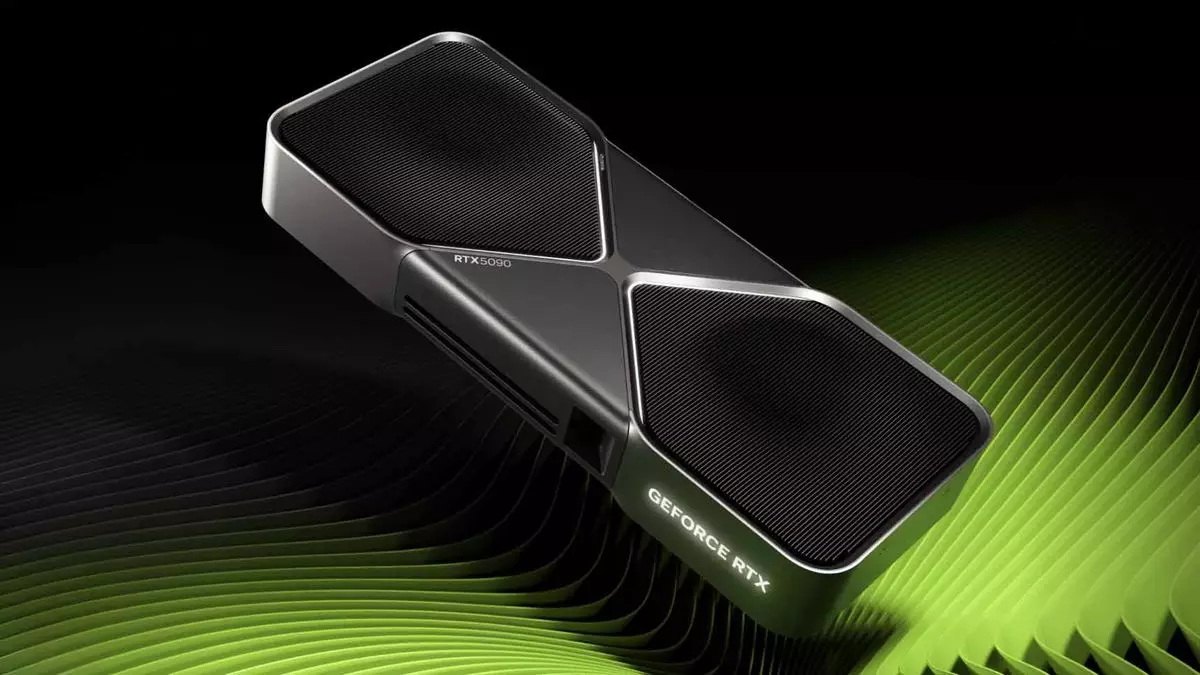The graphics card market is always a hotbed of speculation, excitement, and anticipation, especially with established players like Nvidia constantly pushing the boundaries of technology. The recent hints at the performance capabilities of the upcoming Nvidia RTX 5090 have sparked discussions and debates within the tech community. With details about a potentially fully unlocked GB202 GPU leaking, enthusiasts are eager to dissect what these revelations could signify both for the product and for Nvidia’s strategy in the competitive GPU landscape.
One of the standout features of the rumoured RTX 5090 is its potential CUDA core count, set to soar to a whopping 24,576—an impressive increase over the 21,760 cores of the expected retail version. This development comes from an engineering board purportedly revealed by a user on the Chiphell forum, known for its leaks related to unreleased GPUs. However, enthusiasts are reminded to approach these findings with caution, as no official confirmation is available just yet.
Furthermore, the leaked board is said to be equipped with GDDR7 memory clocked at 32 Gbps, surpassing the standard 28 Gbps memory slated for the consumer version of the RTX 5090. When translated into performance metrics, this equates to a significant bandwidth boost from 1,792 GB/s to an astounding 2,048 GB/s. This increased data throughput is essential for harnessing the power of such a high CUDA core count, promising exceptionally enhanced rendering and processing capabilities.
Delving deeper into the engineering board specifics, we encounter a power rating of 800 watts—a figure that raises eyebrows and prompts questions regarding energy efficiency and thermal management. This high wattage suggests that Nvidia has potentially chosen to push the limits of performance without necessitating extreme underclocking, which often would denote a lower core count flagship model. Such a move indicates Nvidia’s confidence in the chip’s capabilities, but it also adds to the discourse on the sustainability and practicality of such powerful components, particularly given the growing concerns about energy consumption in the tech industry.
The implications of such power demand cannot be understated, particularly when considering the cooling solutions that will be necessary to maintain optimal performance. As consumers increasingly seek systems that are both powerful and environmentally friendly, Nvidia may need to rethink how it approaches thermal design and energy efficiency for next-gen GPUs.
Amid these revelations, it’s important to evaluate the competitive landscape in which the RTX 5090 will be launched. Historically, Nvidia has released powerhouse GPUs that often outpace their competitors. Yet with AMD gearing up its RDNA 4 architecture, the dynamics are shifting. Notably, the perceived minimal competition from AMD in the high-end segment might embolden Nvidia to take a more conservative approach with the RTX 5090. Nvidia may capitalize on its strong market position, which could lead to underwhelming performance releases that don’t fully capitalize on the available hardware potential, as seen in previous iterations like the RTX 4090.
The excitement surrounding the RTX 5090 also comes tempered with an increasing sense of skepticism within the community. Recent feedback from tech channels indicates a noticeable disappointment with the specifications released so far, suggesting that Nvidia’s strategy may not entirely align with user expectations. If the RTX 5090 fails to excite consumers, Nvidia could potentially miss a marketing opportunity to promote a higher-end option, creating an identity crisis for the card even before its release.
For Nvidia to navigate the challenges and capitalize on the RTX 5090’s potential, significant considerations must be made. The release of a fully unlocked variant polished with a complete GB202 architecture could not only alleviate concerns over the base model’s specifications but would also provide an enriching narrative for the brand—demonstrating a willingness to push the envelope when it comes to raw GPU power. The potential introduction of a variant like an RTX 5090 Ti or a Titan card could cater to enthusiasts eager for cutting-edge technology.
As the anticipated arrival of the Nvidia RTX 5090 looms, key questions remain regarding the specifications, power efficiency, and competition landscape. The tech world is watching closely, and Nvidia has both a thrilling opportunity and a daunting challenge ahead. A bold release could redefine user expectations and showcase Nvidia’s innovation prowess, reaffirming its leadership in the GPU market amidst evolving consumer demands and competitive pressures.


Leave a Reply